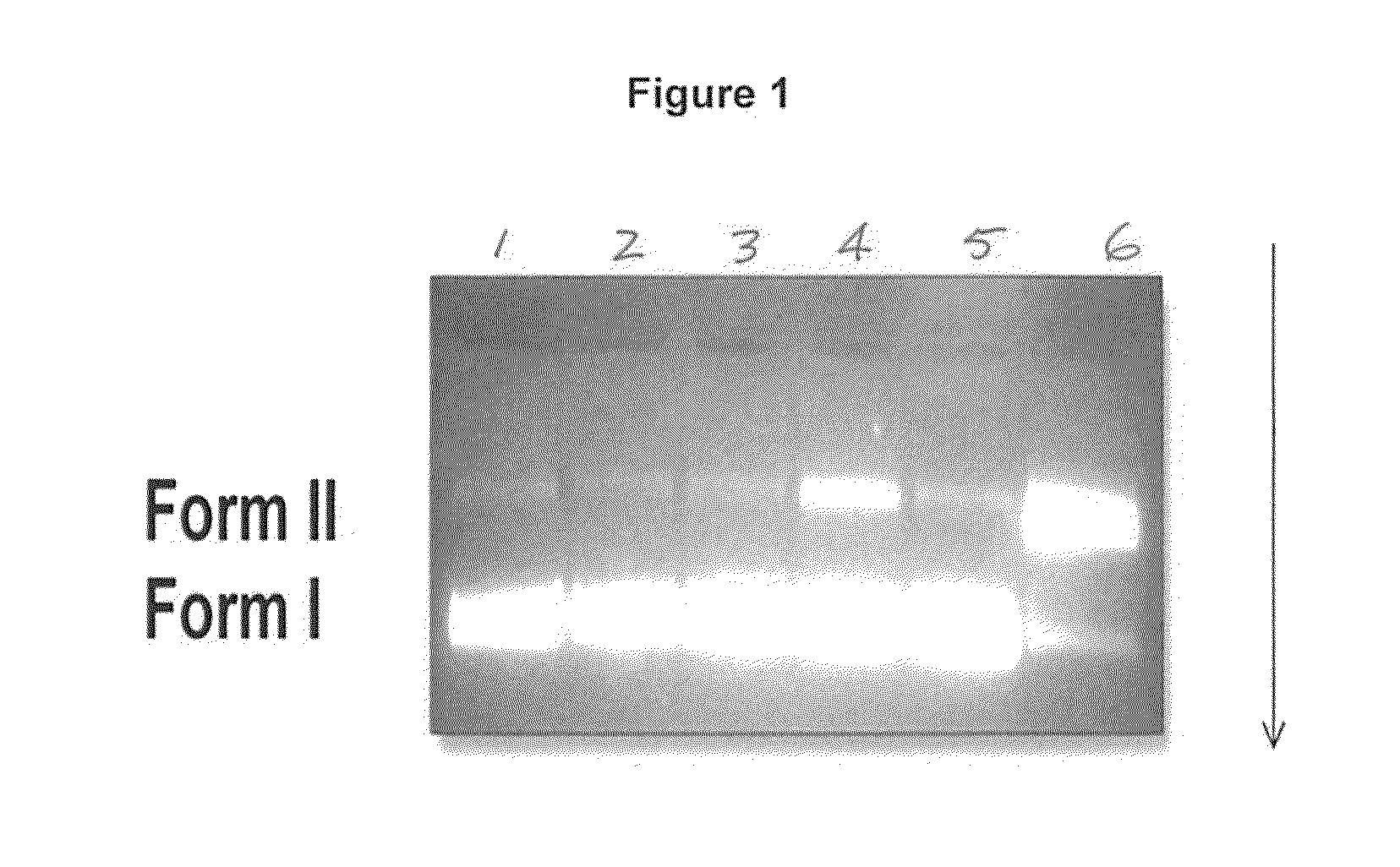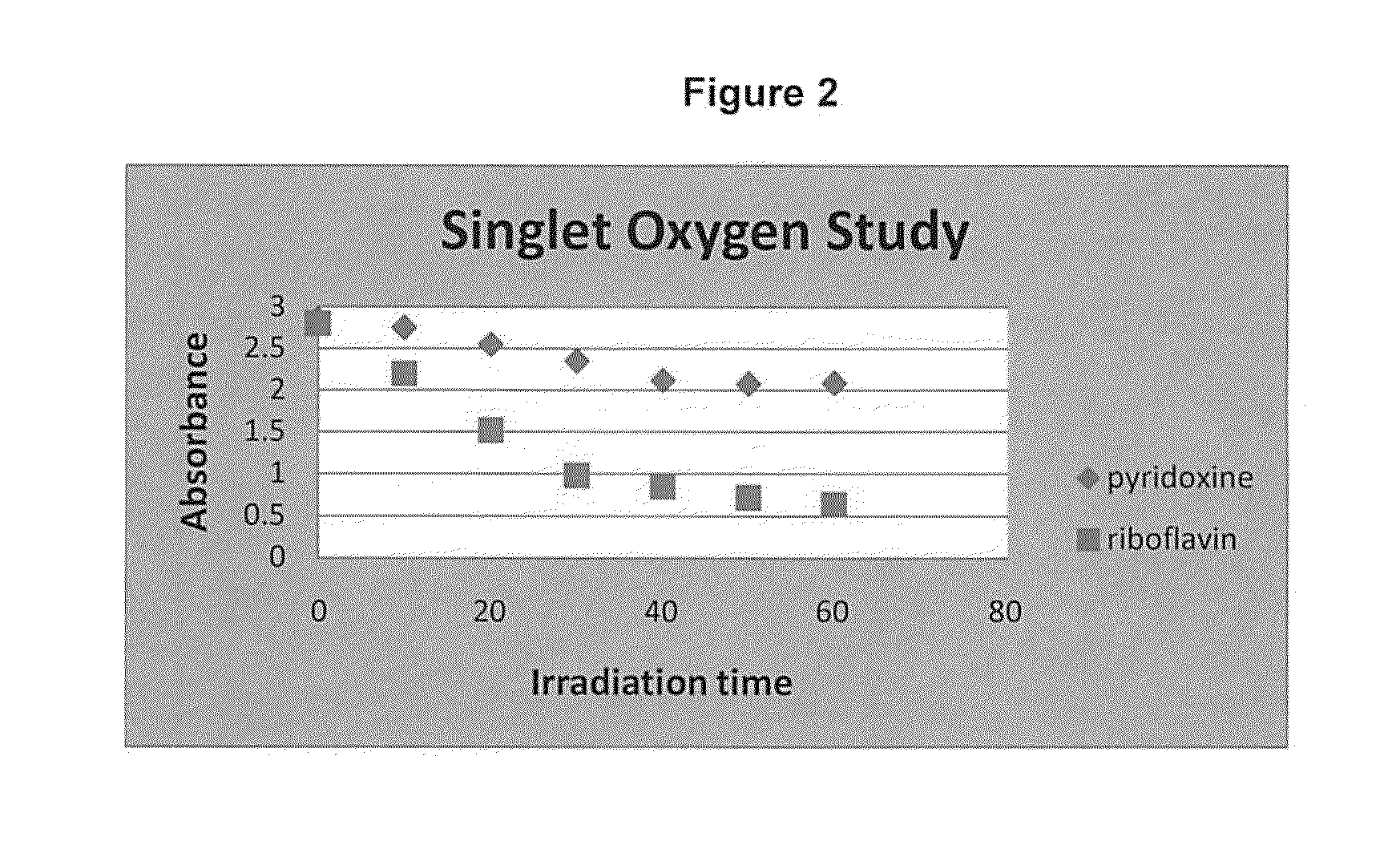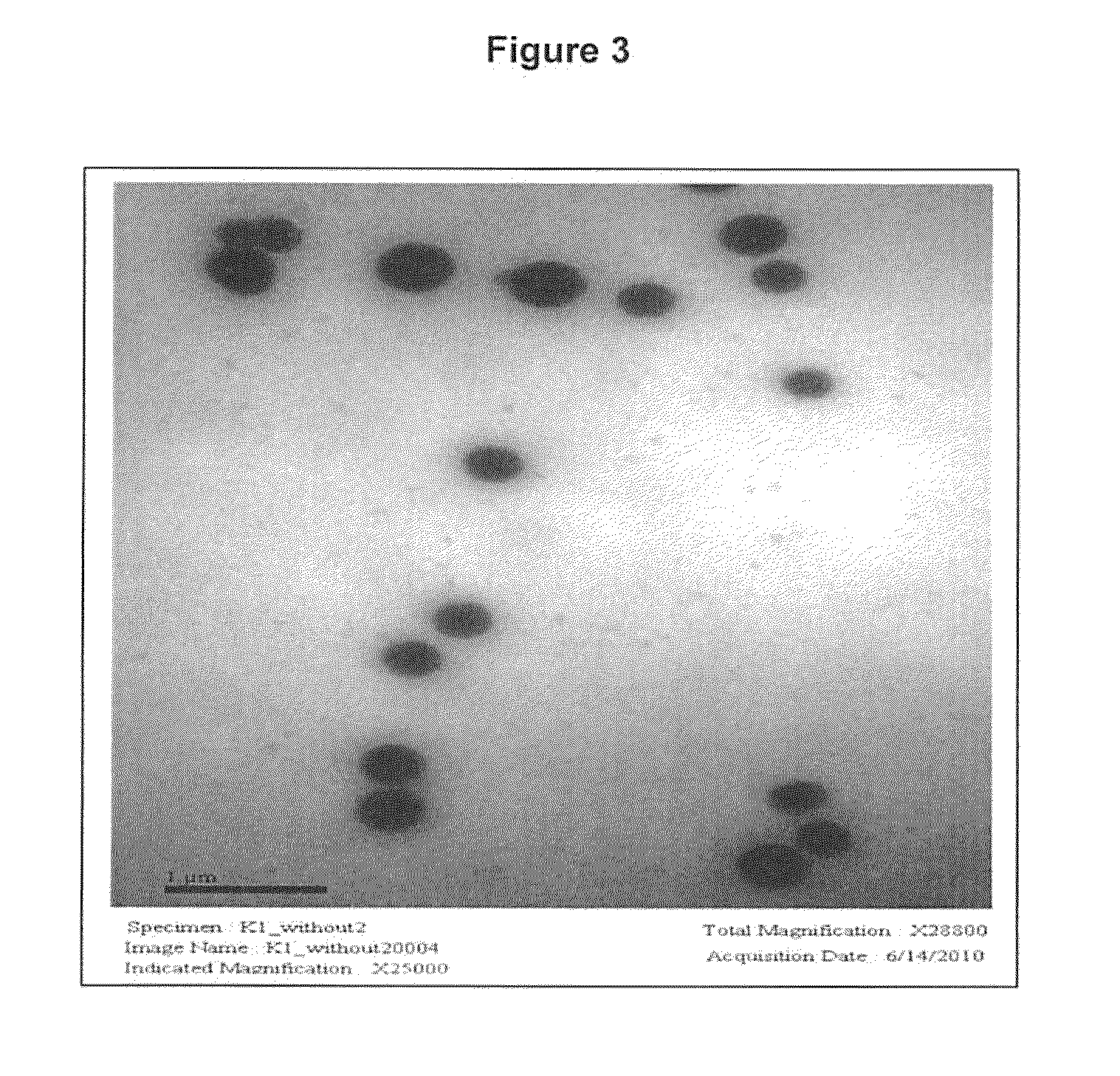Photoactive vitamin nanoparticles for the treatment of chronic wounds
a technology of photoactive vitamins and nanoparticles, which is applied in the field of photosensitizer-containing nanoparticles as photodynamic antimicrobial agents, can solve the problems of affecting the healing process, and affecting the healing effect of chronic wounds, so as to improve the healing effect, and improve the effect of healing
- Summary
- Abstract
- Description
- Claims
- Application Information
AI Technical Summary
Benefits of technology
Problems solved by technology
Method used
Image
Examples
example 1
[0041]Riboflavin (3.0 mg) is dissolved in 10 ml of ethyl acetate to form an 800 μM (micromolar) organic phase. 500 μM palmitic acid (surfactant) is dissolved in 20 ml of water to form an aqueous phase. Palmitic acid is difficult to dissolve in water and must be sonicated for about 20 min. AOT (sodium 1,4-bis[(2-ethylhexyl)oxy]-1,4-dioxobutane-2-sulfonate) or PVA (polyvinyl alcohol) can be used instead, or palmitic acid can be dissolved in ethyl acetate. PVA is also difficult to dissolve in water at room temperature. The aqueous solution needs to be heated to about 80° C. for the PVA to dissolve. Reduce the temperature of the solution to about 50° C. before performing the next step.
[0042]The organic phase is added to the water phase dropwise with constant stirring over low heat. Ethyl acetate is very volatile and has a low boiling point of 77° C. It can be removed from the sample by gentle heating in a hot water bath. Stirring is continued until all of the ethyl acetate evaporates (s...
example 2
[0043]PLGA-PEG block copolymer is used in this formulation. (Intl. J. Pharmaceutics, 1996, 138:1-12.) Riboflavin (3.0 mg) and 100 mg of poly(lactic-co-glycolic acid) (PLGA) are dissolved in 10 ml of ethyl acetate with constant stirring to form an organic phase. 58 mg of polyethylene glycol (PEG 200) is dissolved in 20 ml of water to form an aqueous phase. The above organic phase is added to the above aqueous phase dropwise with constant stirring. Ethyl acetate is very volatile and has a low boiling point of 77° C. It is removed from a sample by gentle heating in a hot water bath. The final product is an amphiphilic PLGA-PEG copolymer which forms micelles having a PLGA hydrophobic core and a PEG shell in water. 0.8% w / w Carbopol Ultrez 10NF polymer (Lubrizol) is added as a stabilizer and thickening agent.
example 3
[0044]This formulation entraps a hydrophilic photosensitizer inside the nanoparticle. A water-oil-water (w / o / w) double emulsion method is developed to entrap hydrophilic cobalamin (vitamin B12) inside double-coated nanoparticles. Cobalamin (vitamin B12) absorbs visible light and thus is an ideal candidate as a PACT agent. It also has a water solubility of 12.5 mg / ml.
[0045]Vitamin B12 (6.0 mg) is dissolved in 5 ml of water to form a first (3 mM) aqueous phase. 4 ml of Surfynol 465 is dissolved in 10 ml of ethyl acetate to form an organic phase. The aqueous phase is added dropwise into the organic phase with constant stirring. Reverse micelles are formed in this step as a water-in-oil emulsion. Surfynol 465 is a surfactant comprising a polyethylene glycol ether (or acetylenic diol) supplied by Air Products Ltd. Other suitable polymers for use in the present invention include Surfynol 420, Surfynol 440, Surfynol 480 and Surfynol 485.
[0046]The final water phase is prepared by dissolving...
PUM
| Property | Measurement | Unit |
|---|---|---|
| temperature | aaaaa | aaaaa |
| boiling point | aaaaa | aaaaa |
| volume | aaaaa | aaaaa |
Abstract
Description
Claims
Application Information
 Login to View More
Login to View More - R&D
- Intellectual Property
- Life Sciences
- Materials
- Tech Scout
- Unparalleled Data Quality
- Higher Quality Content
- 60% Fewer Hallucinations
Browse by: Latest US Patents, China's latest patents, Technical Efficacy Thesaurus, Application Domain, Technology Topic, Popular Technical Reports.
© 2025 PatSnap. All rights reserved.Legal|Privacy policy|Modern Slavery Act Transparency Statement|Sitemap|About US| Contact US: help@patsnap.com



